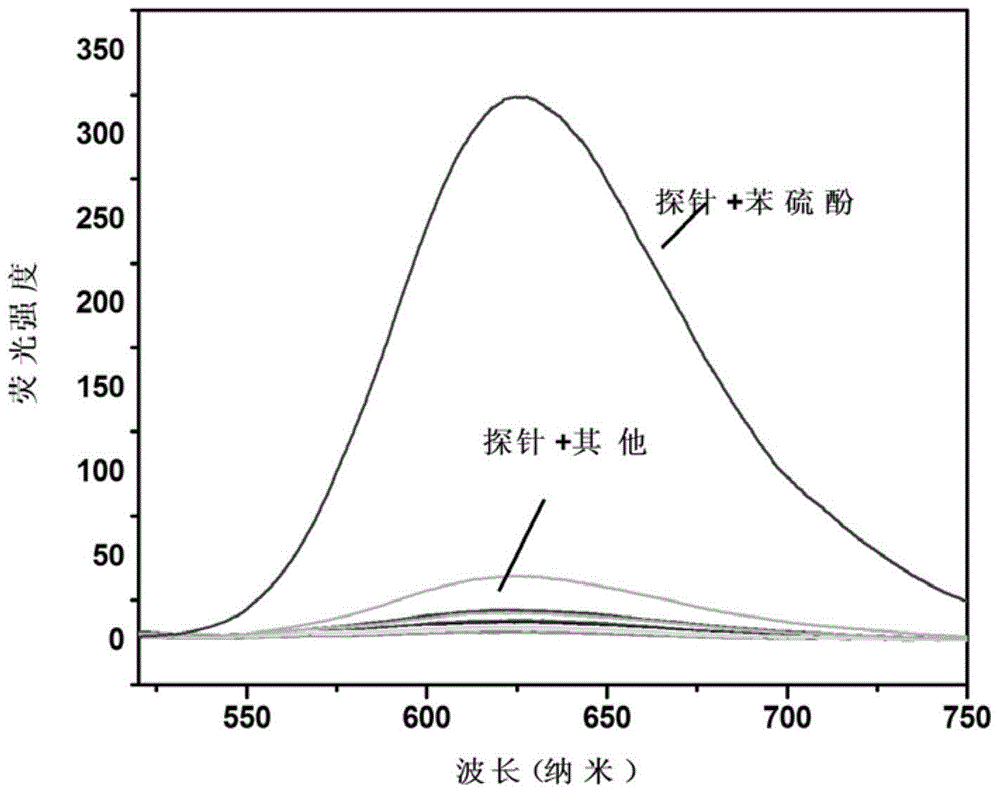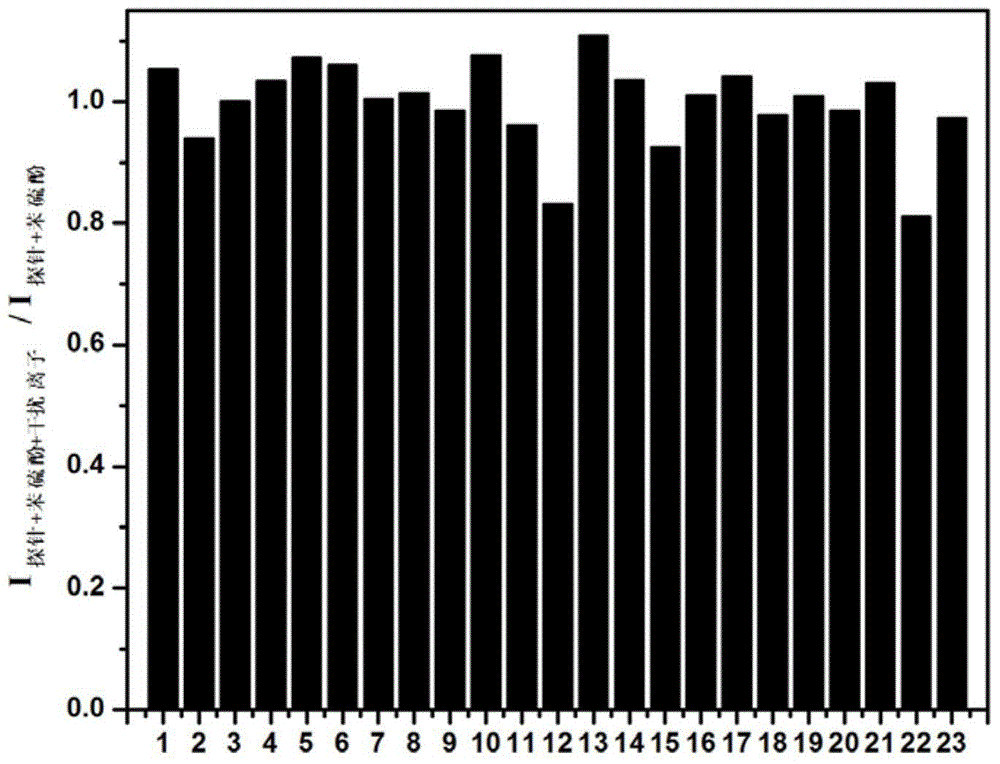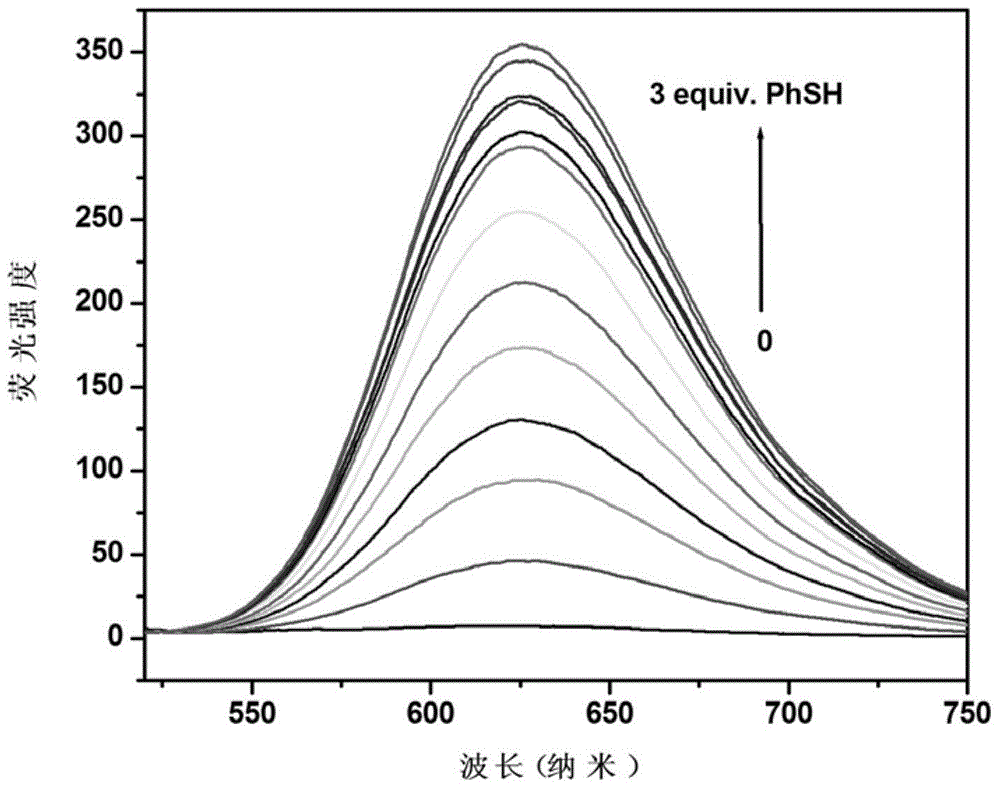Preparation and application of fluorescence-enhanced thiophenol fluorescence probe
A fluorescent probe, thiophenol technology, applied in the field of chemical analysis and detection, to achieve the effect of fast response, good selectivity, and simple synthesis
- Summary
- Abstract
- Description
- Claims
- Application Information
AI Technical Summary
Problems solved by technology
Method used
Image
Examples
Embodiment 1
[0018] Embodiment 1: the synthesis of compound 6
[0019] Weigh 4-methoxy-2-nitroaniline (16.8g, 0.1mol) and 10% Pd / C in a 500mL round-bottom single-neck flask, add 200mL methanol to dissolve, fully ventilate with argon three times, and then pass in hydrogen , heated up to 60°C for 12 hours, after the reaction, cooled to room temperature, filtered with suction, removed the catalyst, and removed the solvent by rotation to obtain a brown liquid which is compound 6.
Embodiment 2
[0020] Embodiment 2: the synthesis of compound 5
[0021] Compound 6 was dissolved in 350 mL of acetonitrile solution, glyoxal solution (40%, 32 mL, 2.6 mol) was added, and the temperature was raised to 60° C. for 6 h. After the reaction was completed, it was cooled, and the solvent was removed by rotation to obtain a brown solid which was Compound 5. Yield: 13.6 g. Yield: 85%. m.p.58-60°C.
Embodiment 3
[0022] Embodiment 3: the synthesis of compound 4
[0023] Weigh compound 5 (5.5 g, 0.034 mmol) into a 500 mL round-bottomed single-necked flask, add 150 mL of toluene to dissolve, and cool the reaction solution to 0°C. Sodium borohydride (13.2 g, 0.35 mol) was slowly added to the cooled solution, and the resulting brown-yellow solution was stirred for 10 min. Acetic acid (57.3 mL, 1 mol) was slowly added dropwise to the above solution, and the temperature of the reaction solution was kept between 5-10° C. After the dropwise addition was completed, the reaction was continued for 1 h. Warm up to reflux and react for 5h. After the reaction was completed, it was cooled to room temperature, and 250 mL of deionized water was added to the reaction liquid. The organic layer (toluene) was separated from the water layer, the organic layer was dried with anhydrous sodium sulfate, the water layer was extracted with 150 mL of ethyl acetate, dried with anhydrous sodium sulfate, and the so...
PUM
 Login to View More
Login to View More Abstract
Description
Claims
Application Information
 Login to View More
Login to View More - R&D
- Intellectual Property
- Life Sciences
- Materials
- Tech Scout
- Unparalleled Data Quality
- Higher Quality Content
- 60% Fewer Hallucinations
Browse by: Latest US Patents, China's latest patents, Technical Efficacy Thesaurus, Application Domain, Technology Topic, Popular Technical Reports.
© 2025 PatSnap. All rights reserved.Legal|Privacy policy|Modern Slavery Act Transparency Statement|Sitemap|About US| Contact US: help@patsnap.com



